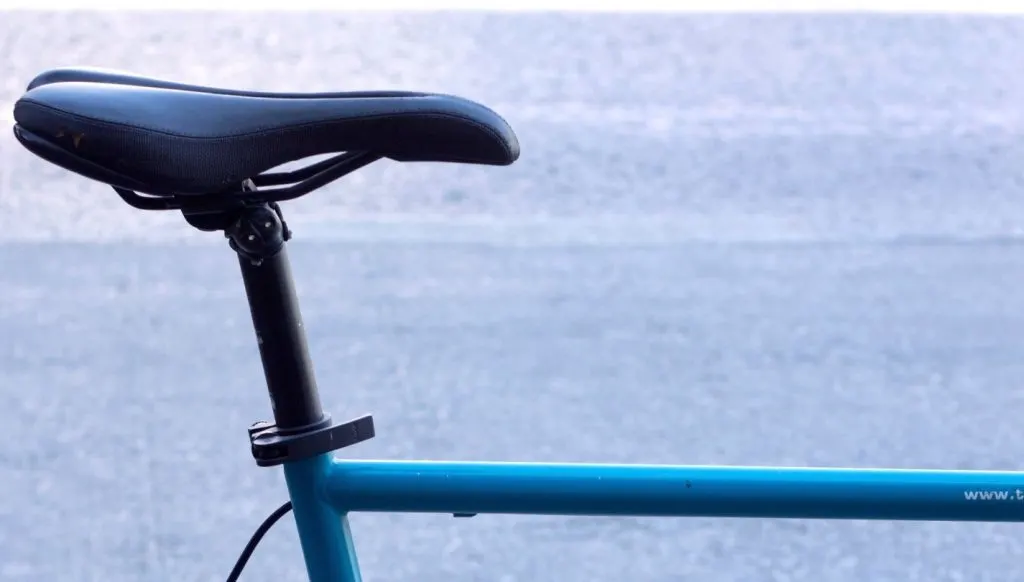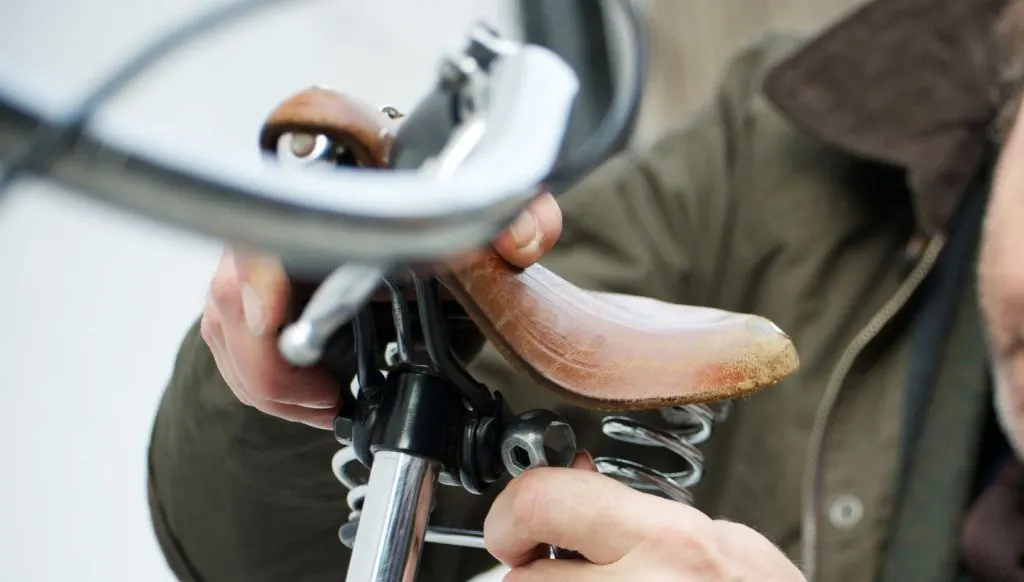
The short answer is, ”Yes, you can cut down your bike seat post,” but the real questions are why, when, and how you should do this.
The seat post is the pole that holds the saddle and fits into the seat tube. The seat tube is part of the frame and holds the seat post using a clamp with a lever to tighten or loosen the seat post. It is possible to cut down the seat post in order to give you a better fit on your bicycle.
When you buy your bike or do your bike setup, the seat post is adjusted for your height to give you a strong riding position. Sometimes, the seat post needs to be changed and sometimes it’s too long, so cutting it becomes the solution.
Why Would You Cut A Seat Post?
There are various reasons why a rider would consider cutting down the seat post, and the most obvious of which is because the seat post is too long, which affects the riding position, standing clearance, and comfort of the rider.
Very long seat posts can interfere with other elements on the bike, like the screws that hold the water bottle holder on the bike. When the seat post is too long, it won’t get low enough into the seat tube to have the rider’s saddle at the right height as it will hit the screws in the frame.
Another reason is to save weight. Yes, sometimes a few grams can make a difference, but not unless you’re cycling at the very top level. The minuscule difference it would make in weight-saving would have no measurable effect for the average rider.
What You Need To Know Before Cutting A Bike Seat Post
The actual cutting of the seat post is the easy part, but as with any alterations to bike components, there are some things you need to know before you whip out your hacksaw, the most important of which is the Minimum Insertion Length.
While it may sound exciting, this is a critical part of the manufacturer’s specifications on the post. Getting this part wrong will have serious implications for the rider and risk potential damage to the seat tube!
Every seat post has a minimum insertion length, and this is how much seat post needs to be in the frame to be stable and support the weight of the rider safely. Cycling is all about safety, and having a dodgy seat post can only end in disaster!
Before you start your cutting, there are some essential measurements you need to make.
The Critical Seat Post Measurements You MUST Have
There are three essential measurements you require before you take any blade to your seat post:
- The total length of the seat post
- The minimum insertion length (MIL)
- The length of the seat post that shows above the seat tube
The formula for calculating how much you can cut off is as follows:
Maximum cut = Seat post Length – (minimum insertion length + length of seat post above the tube)
As an example, let’s do a calculation. The figures are rounded off for convenience and demonstration purposes.
Total Seatpost length = 38cm / 15”
Minimum insertion length = 10cm / 4”
Length of post above the tube = 15cm /6”
Using this information in the formula above:
15”-(4”+6”) = 5” maximum cut or 38cm – (10cm + 15cm) = 23cm maximum cut
So in this particular situation, the maximum amount you can cut off the seat post is 23 cm. Now let’s take a look at how to go about actually cutting it correctly…
What You Will Need To Cut Your Seat Post

To cut your seat post, you will need:
- a measuring tape
- a hacksaw (for steel and carbon posts)
- a marking pen to make sure you mark the cut line clearly and accurately
- sandpaper
If your post is carbon, make sure you get a hacksaw blade specifically designed to cut carbon. These blades will have more teeth per inch to make a smooth cut as carbon is a very fine material.
The sandpaper will be used to remove any filings or burrs accumulated from the cutting process. As with anything, the right tool for the right job holds sway!
Using the calculation formula above, measure your seat post correctly and mark your cut line.
Marking, Cutting, and Finishing The Seat Post
Once you have your measurements down and double-checked, it’s time to cut. Mark the new insertion length using a permanent marker, (or you can make a scratch on the post itself).
Ensure your post is clamped or otherwise held fast so that it doesn’t move while you’re cutting it.
QUICK TIP: Before you make your marked cut, consider making a ‘test’ cut to take off a smaller piece of the tube to get a feel for the cut itself before committing to the final one!
Once your cut is complete, you need to file down the edges using sandpaper or a file. Remember that default seat posts have a beveled end to fit easily into the seat tube on the frame.
It would be best to recreate this bevel so the newly cut post fits easily into the frame. Not doing this properly can damage the seat tube, which would be a very costly error indeed!
Pros and Cons of Cutting Your Seat Post
Cutting seat posts is a prevalent practice, and provided the minimum insertion length as maintained; there would be no risk of damage to the frame or compromise the rider’s safety on the saddle.
The most significant advantage of cutting the seat post is for fitting. The post may be too long, and if shorter riders have to keep adjusting it; then cutting the post makes total sense.
It also makes sense in the same breath where the rider is adjusting the post, but it cannot extend deeper into the frame due to obstruction by the water bottle braze-on’s found on the seat tube.
Weight savings are another advantage, but if this is the only reason you want to cut your seat post, it may be better to look at modifications that offer a far more significant reduction in weight than cutting down the seat post.
Cutting the seat post does have a downside, too. It would reduce the ability of another person to ride a bike if they were taller than the current rider. Also, the modification of the seat post would lower the resale value.
Can I Damage My Bike If I Cut My Seat Post Down?
The only real risk of damage is if you don’t respect and adhere to the minimum insertion length and don’t file down the rough edges on the cut end of the post.
Cracking and seat tube damage and rider safety are risks if the minimum insertion length is not correct. Outside of this, there is no real risk as a longer insertion length adds no additional strength to the saddle or post.
Once the MIL is correct, the maximum support is achieved, and you can ride with the modified post in complete safety.
There are a few other minor points to consider when doing this, like wearing a mask when cutting to protect yourself from small bits of debris or use masking tape over the cutting area to prevent this from happening.
It’s perfectly fine to cut down your seat post and is quite a common practice. Remember the MIL golden rule, and use the right equipment to do it! Then you can take your bike back out there and enjoy a more comfortable ride knowing that your seat post was suitably modified!
